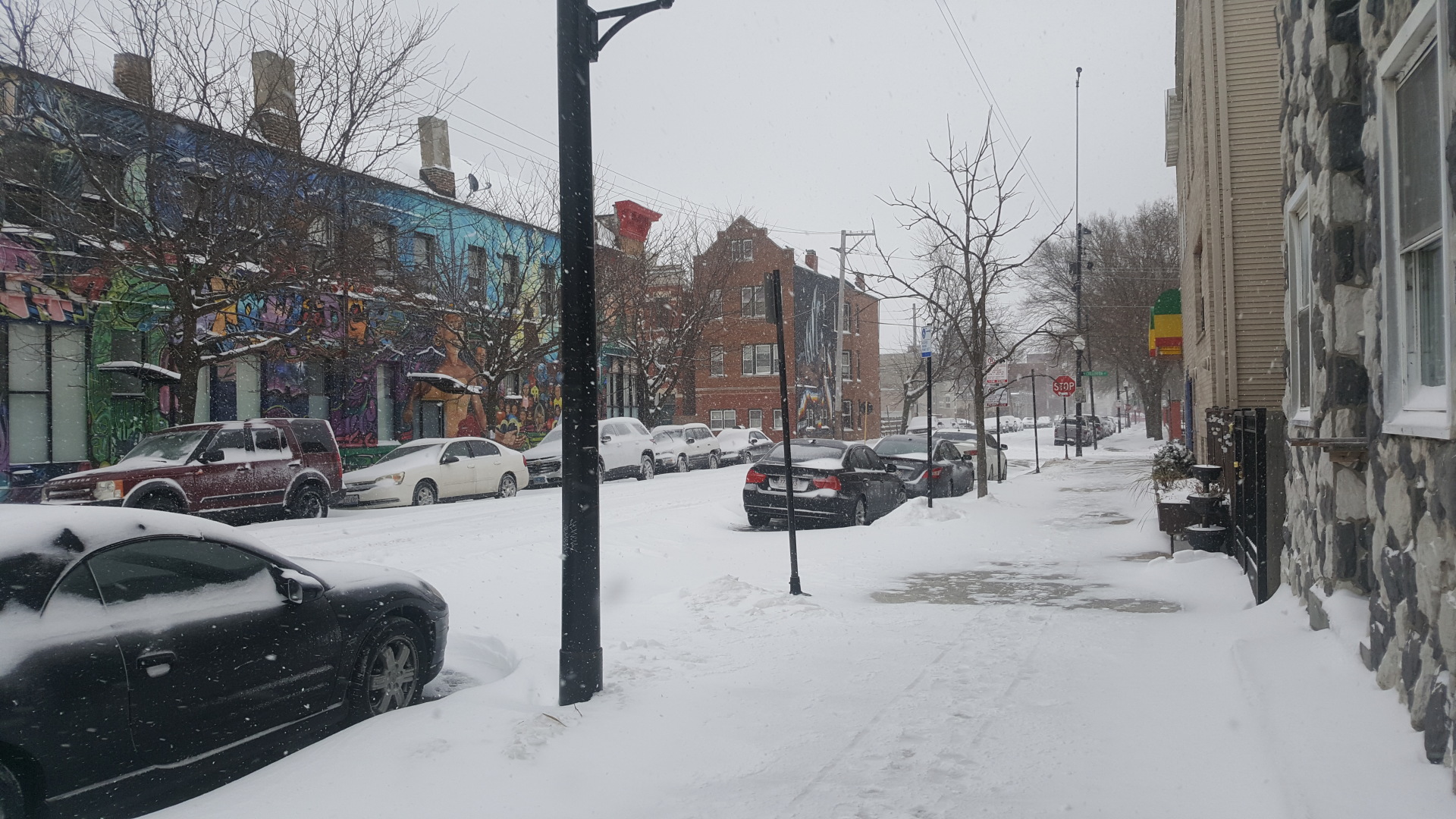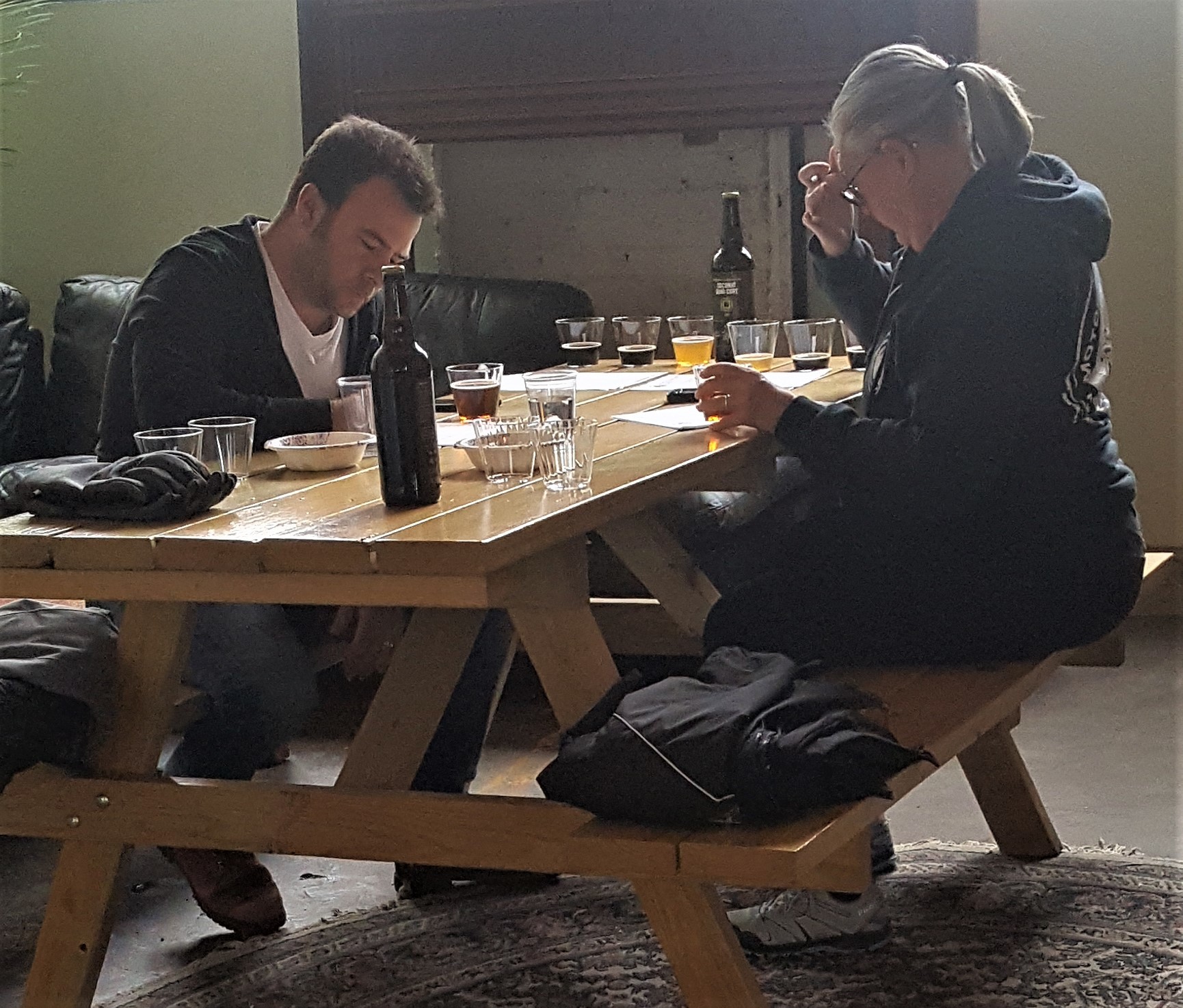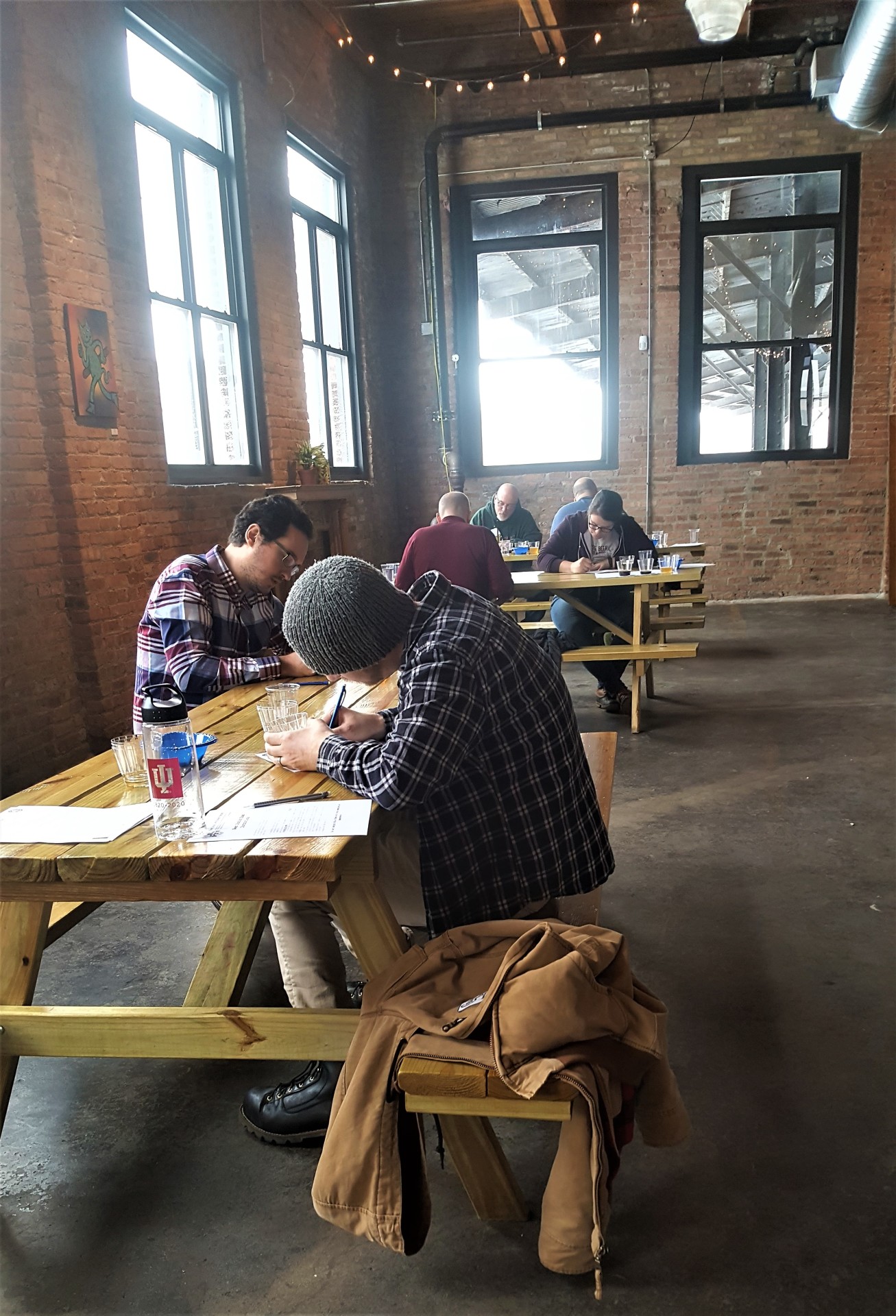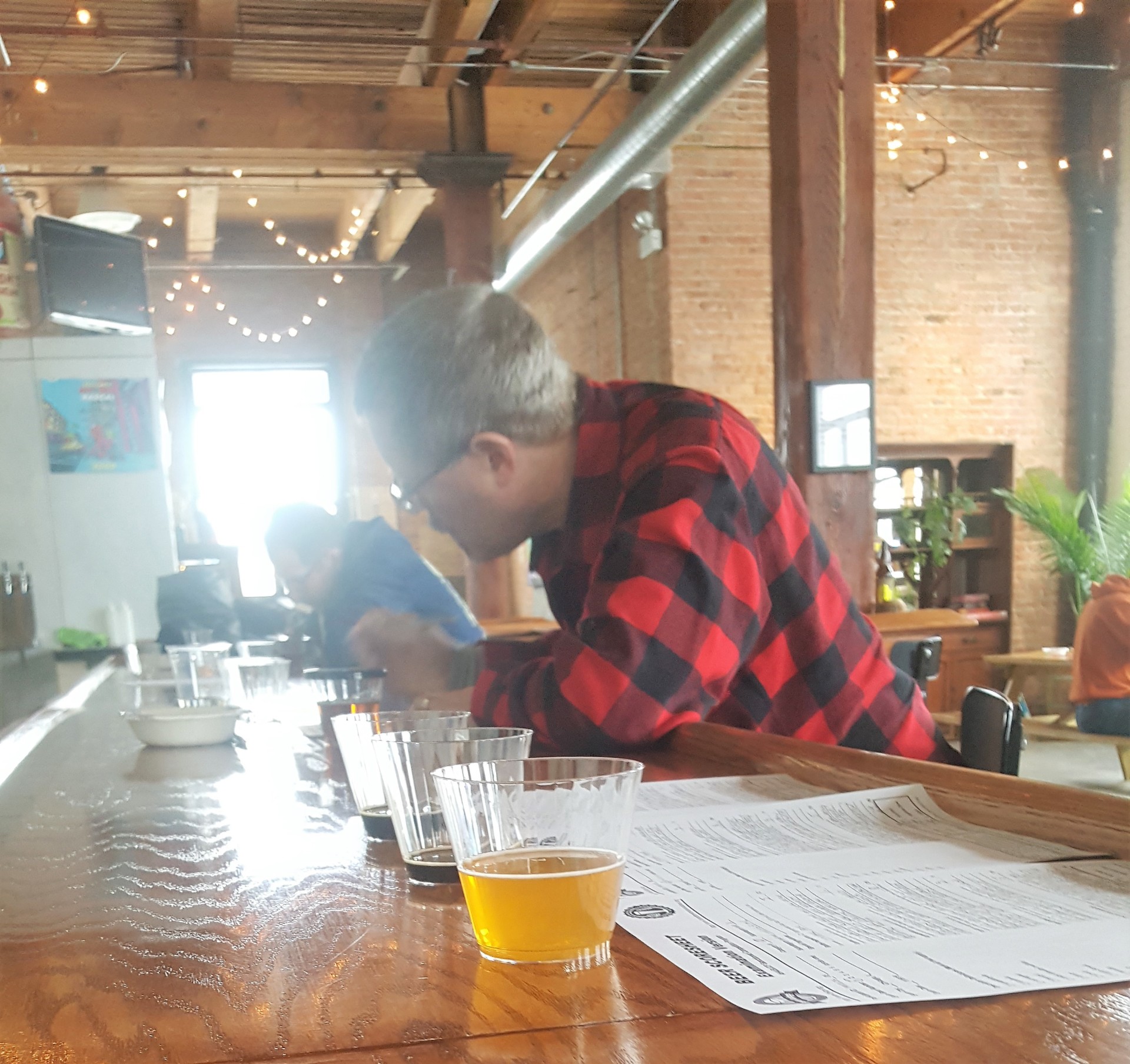https://singingboysbrewing.com/blog/what-a-hobby-bjcp-beer-evaluation-exam
Tasting Beer is Serious Stuff: BJCP Beer Evaluation Exam
A hardy cadre of beer judges and brewers took a beer tasting and evaluation exam that I administered this past Saturday morning. It turned out to be a wild, wintry morning, but ten registrants braved the cold and snow to make their way to Lo-Rez Brewing in Chicago’s Pilsen neighborhood to take the test.

The Beer Judging Examination is the second of three tests for the Beer Judge Certification Program (BJCP), an international, volunteer-driven organization that educates and credentials judges and competitions. I presented six beers, one every fifteen minutes, to the examinees, telling them only the style of the beer. They then filled out a scoresheet on each beer, including sections on aroma, appearance, flavor, mouthfeel and their overall impression.
Proctors and Examinees
Two proctors, Gail Milburn and Jordan von Kluck, each did the same. Both are senior, experienced judges – Gail’s rank is Grand Master and Jordan is a National judge. Exam graders will use their scoresheets, as well as my information on the beers presented, as a basis to grade the examinees scoresheets.

Six of the examinees are already credentialed judges and retook the exam in order to increase their BJCP rank. This is common – like most things, practice improves performance. When I initially took the exam, I did well enough to be credentialed as a Certified judge. After more than three years of judging at competitions, I had increased my competency to the point where I retook the exam and improved my score enough to be promoted. For the last couple of years, I’ve volunteered as a judge at more than two dozen competitions and am a better judge than I was two years ago.
The other four examinees are prospective beer judges, seeking credentials. These prospective judges are my motivation for putting in the effort to administer the exam – building the pool of BJCP judges here in Chicago. One of the key elements for a successful competition is sufficient numbers of credentialed judges. This seems obvious, but honestly, it is one of the biggest issues for competitions and is directly related to the size of flights during the competition and the overall quality of the feedback and scores.

Out of a total of 100 points, an examinee who gets 60 points or greater gains BJCP credentials as a Recognized judge. A score of 70 or more and experience judging in at least five competitions earns the judge a rank of Certified. A score of 80 or more plus experience judging in at least ten competitions means the judge may take the third BJCP exam – a written exam – which may lead to ranks of National, Master or Grand Master. About 85% of BJCP judges are ranked Recognized or Certified.
(continued in the next post)
Tasting Beer is Serious Stuff: BJCP Beer Evaluation Exam
A hardy cadre of beer judges and brewers took a beer tasting and evaluation exam that I administered this past Saturday morning. It turned out to be a wild, wintry morning, but ten registrants braved the cold and snow to make their way to Lo-Rez Brewing in Chicago’s Pilsen neighborhood to take the test.

The Beer Judging Examination is the second of three tests for the Beer Judge Certification Program (BJCP), an international, volunteer-driven organization that educates and credentials judges and competitions. I presented six beers, one every fifteen minutes, to the examinees, telling them only the style of the beer. They then filled out a scoresheet on each beer, including sections on aroma, appearance, flavor, mouthfeel and their overall impression.
Proctors and Examinees
Two proctors, Gail Milburn and Jordan von Kluck, each did the same. Both are senior, experienced judges – Gail’s rank is Grand Master and Jordan is a National judge. Exam graders will use their scoresheets, as well as my information on the beers presented, as a basis to grade the examinees scoresheets.

Six of the examinees are already credentialed judges and retook the exam in order to increase their BJCP rank. This is common – like most things, practice improves performance. When I initially took the exam, I did well enough to be credentialed as a Certified judge. After more than three years of judging at competitions, I had increased my competency to the point where I retook the exam and improved my score enough to be promoted. For the last couple of years, I’ve volunteered as a judge at more than two dozen competitions and am a better judge than I was two years ago.
The other four examinees are prospective beer judges, seeking credentials. These prospective judges are my motivation for putting in the effort to administer the exam – building the pool of BJCP judges here in Chicago. One of the key elements for a successful competition is sufficient numbers of credentialed judges. This seems obvious, but honestly, it is one of the biggest issues for competitions and is directly related to the size of flights during the competition and the overall quality of the feedback and scores.

Out of a total of 100 points, an examinee who gets 60 points or greater gains BJCP credentials as a Recognized judge. A score of 70 or more and experience judging in at least five competitions earns the judge a rank of Certified. A score of 80 or more plus experience judging in at least ten competitions means the judge may take the third BJCP exam – a written exam – which may lead to ranks of National, Master or Grand Master. About 85% of BJCP judges are ranked Recognized or Certified.
(continued in the next post)




